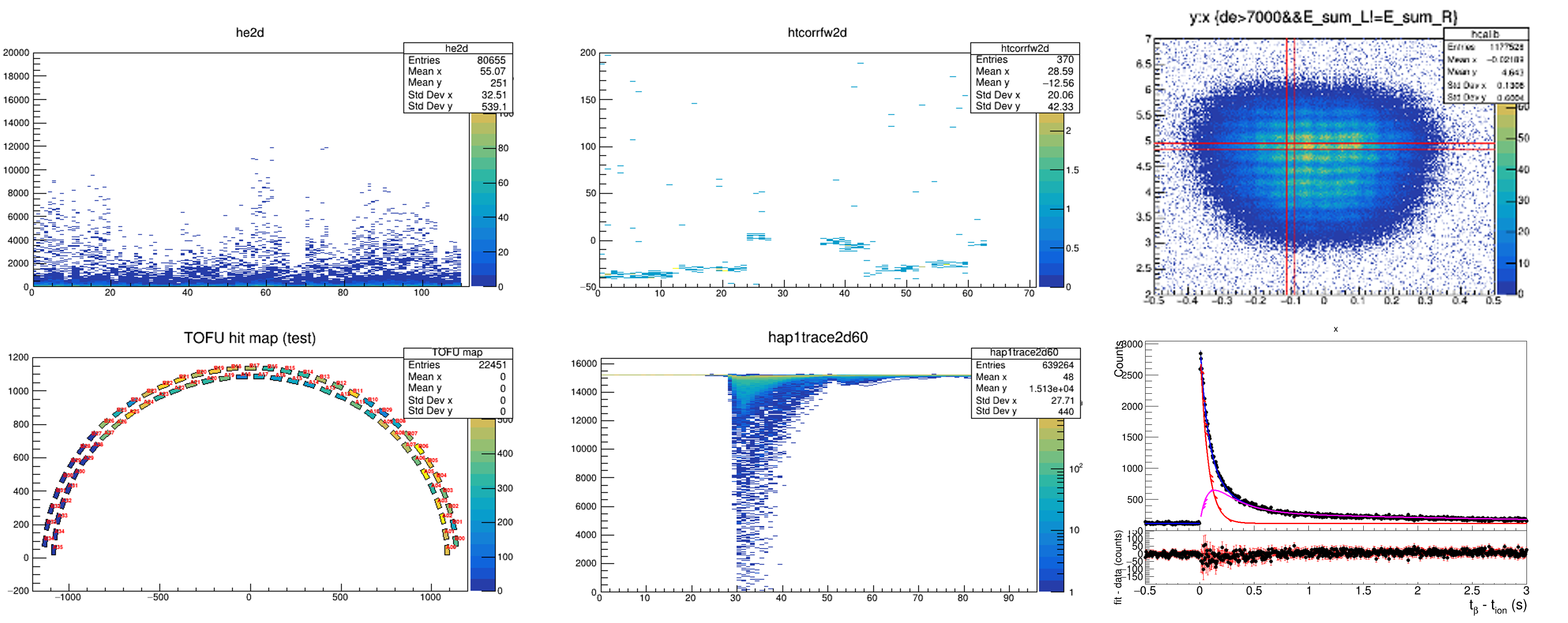Stellar nucleosynthesis of the elements heavier than iron is considered as one of eleven science questions for the new century, with about half believed to result from the rapid-neutron capture process, which thrives in neutron-rich environments, driven by neutron capture reactions and beta decay. Despite significant progress in r-process studies, including recent observations of neutron star mergers [Abbott17, Tanvir17] and expanding nuclear data into neutron-rich regions [Lorrusso15, Phong22] the precise astrophysical origins and conditions of the r-process remain enduring questions in nuclear astrophysics.
To address these questions to some extents, my research focus on expanding experimental data on neutron-rich precursor nuclei. My work centers on understanding the quantum multi-particle nature of atomic nuclei and its relevance to astrophysical processes. Currently, my research delves into studying beta-decay properties of relevant neutron-rich nuclei and developing essential instrumentation, real-time systems, and Monte-Carlo simulation tools for successful nuclear physics experiments.
Bellows are experimental devices that I have been working with:
Tap on each panel to display detailed information
BigRIPS separator
The primary Uranium beam was initially produced by a SuperConducting Electron Cyclotron Resonance (SC-ECR). Uranium material was ejected from a watercooled metallic rod by the sputtering method and ionized into a plasma state inside the RF electromagnetic field of the 28 GHz microwave. The extracted uranium ions, which were tuned for selecting high charge state in the ion source, were further accelerated by a cascade acceleration mode involving RIKEN linear accelerator (RILAC), and four cyclotrons: the RIKEN Ring Cyclotron (RRC), the fixed-frequency Ring Cyclotron (fRC), the Intermediate Ring Cyclotron (IRC) and, finally, the Superconducting Ring Cyclotron (SRC). The purpose of implementing multiple acceleration stages is to efficiently strip (removing electrons) the accelerated ion using charge strippers placed between accelerators. Two charge strippers in a form of He gas and graphite carbon were placed after RRC and fRC to strip the Uranium ion into charge state 92+ˆbefore entering final acceleration stage at SRC. The fully-strip Uranium beam exited from the SRC accelerator, having a kinetic energy of 345 MeV/u (about 70% speed of light), was transported to the experimental area.
The 345 MeV/u 238U beam from the SRC accelerator impinged on a 4 mm Berylliumtarget at the entrance of the BigRIPS spectrometer, the F0 focal plane. The collision of energetic U beam on a low-Z Be target induced in-flight abrasion-fission reactions, resulting in two fragments of neutron-rich nuclei having a similar proton-to-neutron ratio as of the primary beam. In the BigRIPS spectrometer, the two stages separation scheme allows separation of various ion species according to their mass-to-charge ratio and charge state.
In parallel with the separation of a cocktail beam using Bρ − ∆E − Bρ method, several detectors were placed along the beamline of BigRIPS and Zero-degree spectrometer for identification of fragments of interested. Ionizing chambers, plastic scintillators, and position-sensitive detectors provided information on the atomic charge, the timeof-flight, and the position/trajectory, respectively. Combining such information, each ion in the cocktail beam can be identified on an event-by-event basis.
ZeroDegree spectrometer
The ZeroDegree spectrometer, designed with anti-mirror symmetry, comprises two dipoles and six STQs, sharing magnet design with the BigRIPS separator. Its focal points, F8–F11, serve specific functions.
F8 is the object point coinciding with a secondary target. F9 and F10 introduce momentum dispersion, while F11 is fully achromatic. The section from F7 to F8, housing STQ15 and STQ16, acts as a telescopic system, aligning ion optics and adjusting beam characteristics for RI beams.
Each focus within the ZeroDegree spectrometer has a focal-plane chamber for beam-line detectors, mirroring the BigRIPS separator's design.
The ZeroDegree spectrometer's adaptability allows various ion-optics modes, including dispersive modes for momentum dispersion at F11, enabling flexible experimental design optimization.
Digital magic 1: Triggerless aquisition system employed to identify (and time-stampped) rare isotopes under ~15 kHz secondary-beam intensity using the digitized signals from beamline detectors of the Zerodegree spectrometer with negligible deadtime:
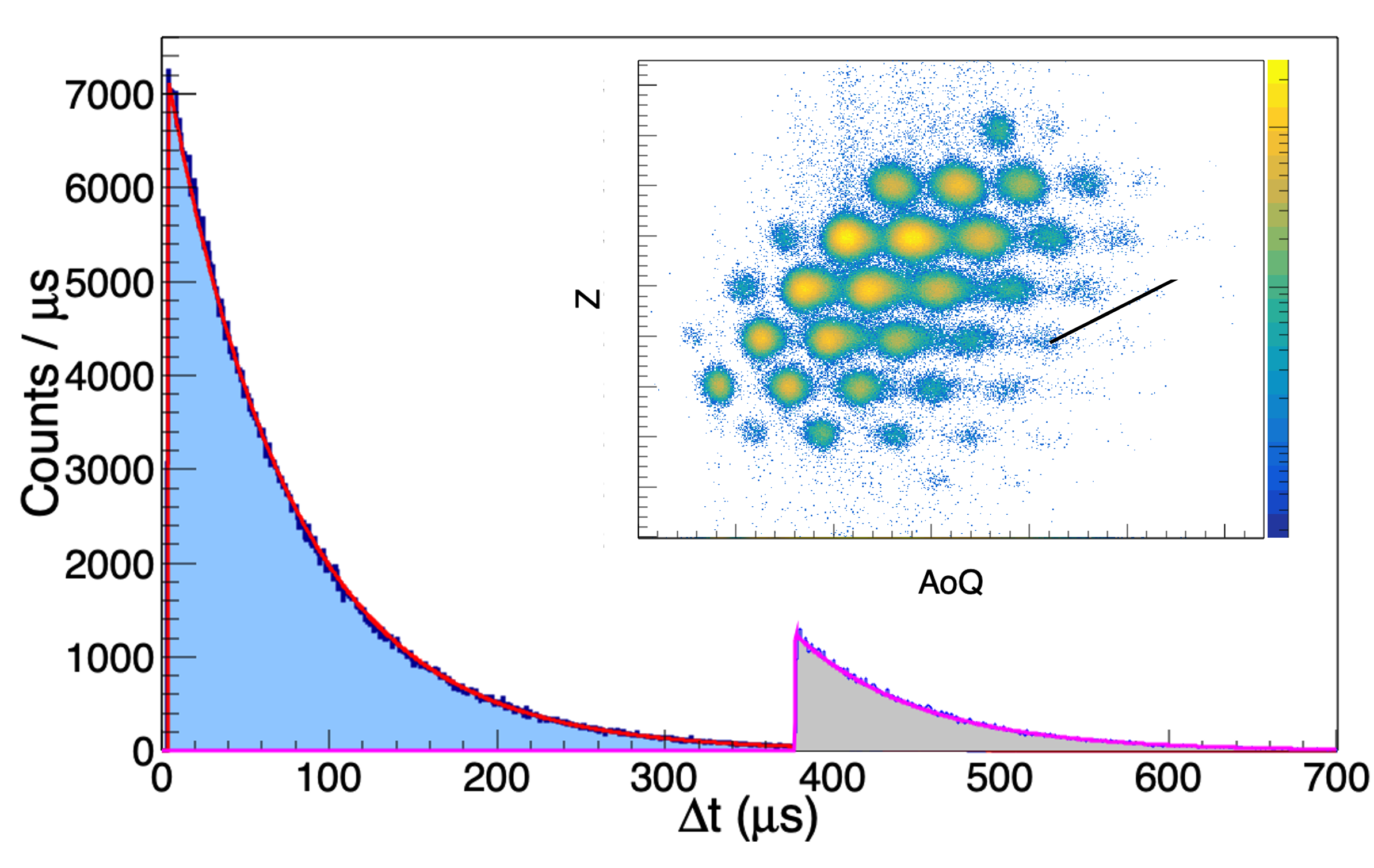
ZDMRTOF device
The radioactive ion beam from the ZeroDegree spectrometer will then enter the ZDMRTOF setup, consisting of: (1) an adjustable energy degrader coupled with (2) a cryogenic gas catcher to thermalize the fast-moving ions by using an RF ion guide method, followed by quadrupole ion beam guides, (3) a high-precision Multi-reflection time-of-flight mass spectrometer (MRTOF-MS) to measure masses.
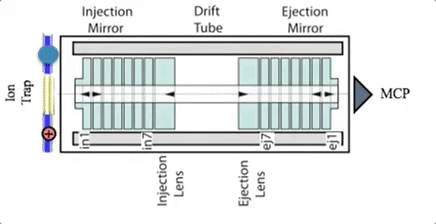
Digital magic 2: Triggerless aquisition system employed to record (and time-stampped) the time-of-flight (TOF) signals of the ions slowed-down by the gas cacher and multi-reflected in the MRTOF device:
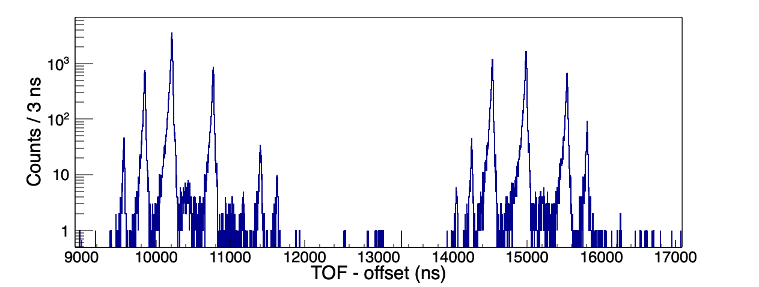
Advanced Decay Station (ADS)
The isotopes passing through the gas cell will be implanted into the newly developed beta-decay station for beta-gamma-neutron spectroscopy designed for high-intensity RI beam. Several detectors surrounding the implantation detector are installed, such as high-purity germanium clover, LaBr3, and neutron time-of-flight detectors for high-resolution and fast-timing measurements of gamma−rays and neutrons emitted from isomeric and beta-decays.
Putting together detectors in the ADS
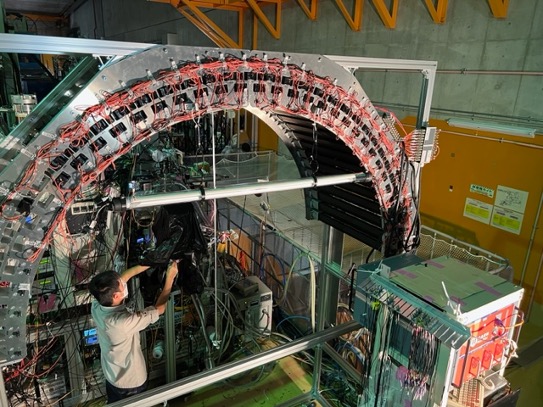
Digital magic 3: Triggerless aquisition system employed to record (and time-stampped) every detector signals, including, LaBr3, HpGe, plastic scintillators and double-sided sillicon stripped detectors in the ADS:
